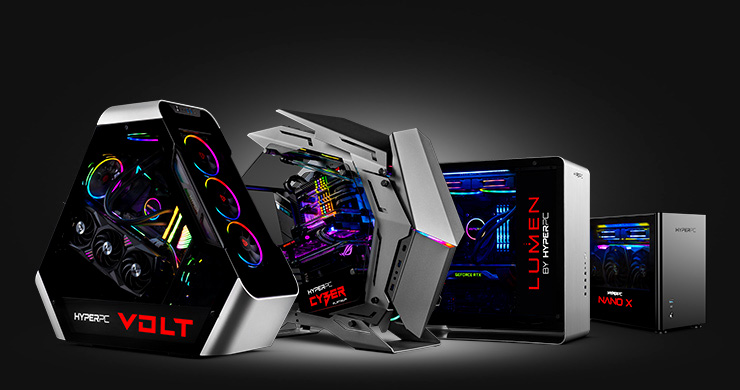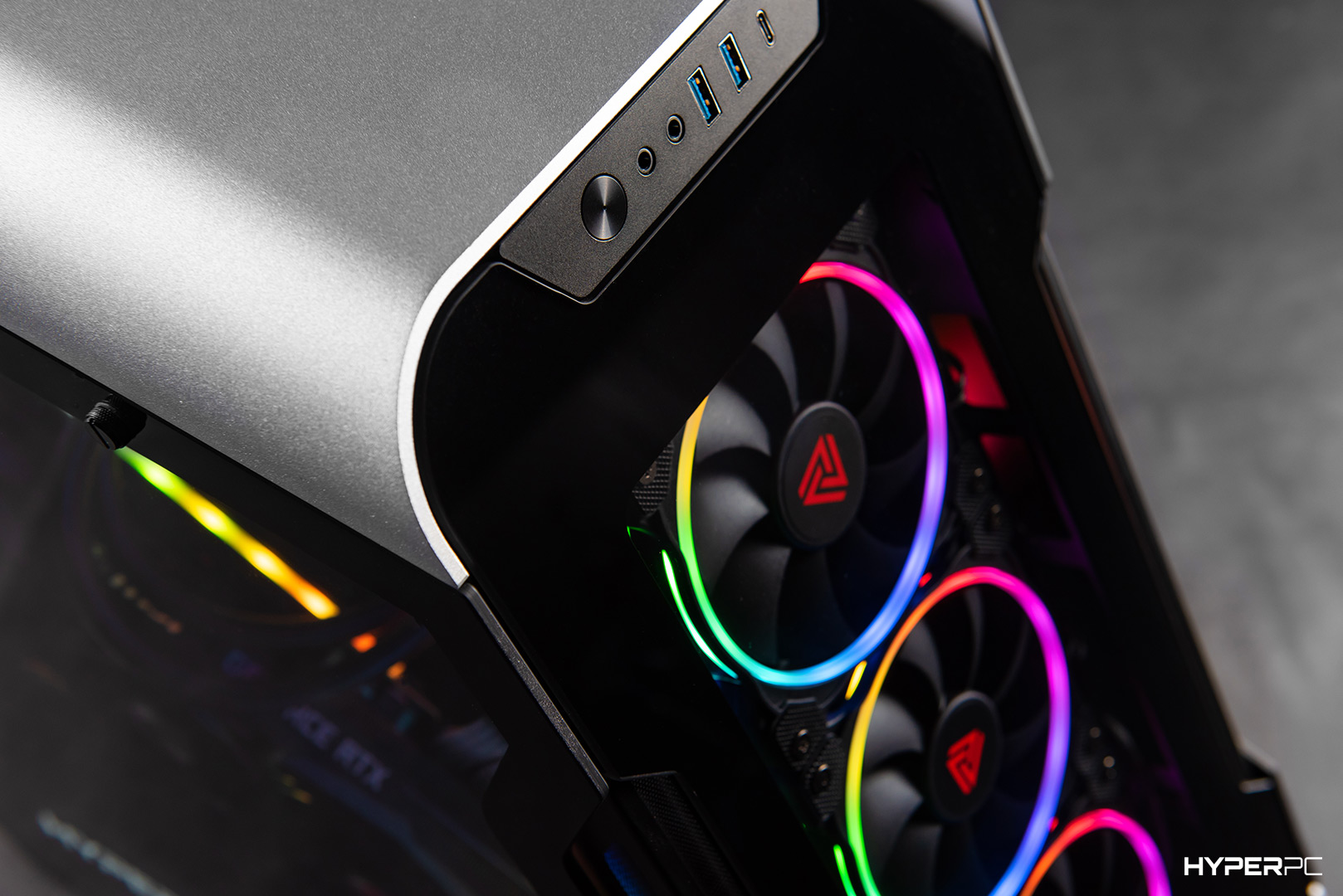-
Choose a computerStep 1 of 3. Goals and Wishes01. Goals and Wishes02. Deadlines and Budget03. ContactsMultiple options can be selectedUsage goalsWishesYour choice
-
Choose a computerStep 2 of 3. Deadlines and Budget01. Goals and Wishes02. Deadlines and Budget03. ContactsOnly one option can be selectedDeadlinesBudget
-
Choose a computerStep 3 of 3. Contacts01. Goals and Wishes02. Deadlines and Budget03. Contacts* — required field

Once computers took up entire rooms, but today they can fit in fairly small cases with interesting design features. As a result, we no longer hide them under our desks but instead display them prominently and decorate them with lighting to admire their appearance.
However, when gamers focus mainly on flashy designs when choosing computer cases, they make mistakes that lead to various problems, from component incompatibility to excessively high operating temperatures.
Next, we'll explain how to choose the right PC case and what to look for to avoid problems during computer assembly and operation.

Compatible motherboard form factors
To simplify computer system assembly, manufacturers have standardized motherboard sizes, calling them "form factors." There are many of them, but the most common ones today are:
- ATX - 305×244 mm;
- E-ATX - 305×330 mm;
- Micro-ATX - 244×244 mm;
- Mini-ITX - 170×170 mm.
When choosing a computer case, you should look first and foremost for the form factor of the motherboards supported. If you buy a case that is not compatible with the size of your motherboard, you will have to either change the case or the board itself. It is not possible to modify the structure yourself or "hack" a new mounting system.
Manufacturers of computer cases always indicate the motherboard form factors supported on their websites. This information can also be found on online store pages.
Maximum graphics card length and CPU cooler height
If the length of the graphics card exceeds that which the case supports, the graphics accelerator will not fit. The same goes for the CPU cooler: if its height exceeds that supported by the case, it will not be possible to close the side panel. Therefore, always check the manufacturer's website to see what the maximum graphics card length and CPU cooler height the case supports.
It is recommended to have a margin of 1-2 millimeters. That is, if the case supports coolers up to 170 mm in height, it is best to choose cooling that is a few millimeters lower so that the side wall definitely closes.
Case size
The size of a computer case is an approximate dimension. There are many types of cases, but today the most popular are:
- Full-Tower - the largest cases;
- Mid-Tower - medium-sized;
- Mini-Tower - small;
- SFF - the smallest cases.
The most common case sizes for PCs are Mid-Tower and Mini-Tower. Their dimensions are sufficient for installing most gaming components available on the market, and the cases themselves do not take up much space on the desk.

Number of HDD and SSD drive bays
When choosing a case, pay attention to how many bays are available for drives. For example, if you have three hard drives and the case only has room for two, you will not be able to install the third one.
Also, when choosing a case, keep in mind that you may need to expand your file storage in the future, so it makes sense to consider cases with more bays. Given how quickly program and video game file sizes are growing, additional drives will be needed fairly soon.
Cooling
Case fans are responsible for cooling features. They direct airflow so that hot air is blown out of the computer case, while cold air flows in. To achieve this circulation, manufacturers install several fans in the case.
Some companies save money and only have one fan on the back wall. On the one hand, this is bad because you lose the correct air circulation "out of the box." On the other hand, there is nothing stopping you from buying additional fan sets and installing them in the case.
In this case, you choose the fans for the system block yourself, decide what size they will be, what speed they will rotate at, and whether you need backlighting. In the end, the quality of the fans will be better than those the manufacturers prepared.
Availability of Dust Filters
To circulate air, not only coolers but also ventilation holes are needed, and they should be covered with dust filters – metal meshes that prevent small particles from getting inside. It is important that the filters are positioned in front of the fans on the intake side – filters on the exhaust side are not necessary, though they won't hurt.
Mesh or Glass
Cases with fans on a mesh front wall are the most common, but many manufacturers make the front panel glass for aesthetic reasons.
There is an opinion that this is unacceptable because it obstructs the ventilation holes and causes computer components to overheat. In reality, cases with a glass front panel also have ventilation holes, just not on the front but on the sides. This is enough to keep the system from "suffocating".
However, cooling in cases with a mesh front panel is indeed more efficient: components in these cases heat up 2-3 degrees less. If this difference is important to you, it is better to choose cases with a mesh panel.
Position of the Power Supply Unit (PSU)
In addition to coolers and ventilation holes, the bottom or top position of the PSU affects air circulation in the case. It used to be installed on top, but in most modern cases, it is only on the bottom. This position is better because the PSU does not take in hot air from the processor and motherboard power supply system. This is good for their temperature and longevity.
Connectors on the Front Panel
The presence and number of connectors on the front panel is not a deciding factor, as extension cords, adapters, and USB hubs can always be used. In addition, external devices can be connected to ports on the back of the PC.
Nevertheless, if there are connectors, it can make using the computer in the future much more convenient. We recommend looking for cases with at least one USB 3.0 connector on the front panel. It is also desirable to have two Jack 3.5 connectors for connecting headphones and microphone.

Glass Material for the Viewing Window
The viewing window on the side can be made of:
- plastic;
- tempered glass.
In our experience, plastic scratches easily and quickly becomes unsightly – just wiping it once with a cloth can ruin its appearance.
Lighting and Its Control
In modern cases, lighting can be:
- LED (monochrome). A Molex cable is used for connection. Sometimes it can be connected through a 4-pin connector on the motherboard.
- RGB (multicolor). The LEDs can be any spectrum of colors. A 4-pin connector with 12V voltage on the motherboard is used for connection.
- ARGB (addressable multicolor). Different sections of the LEDs can light up with different colors. For example, some light up green, others red, others pink, etc. A 3-pin connector with 5V voltage on the motherboard is used for connection.
Lighting makes the appearance of the computer more interesting and original. If you like the way it looks, we recommend not neglecting it. To do this, make sure that your motherboard has the necessary connectors for synchronizing colors.
Conclusion
In short, here are the main factors to consider when choosing a computer case:
- choose a case based on the form factor of the motherboard;
- check the maximum height of the cooler and length of the graphics card;
- determine the type and size of the case that you prefer;
- check how many drive bays the design accommodates;
- find out how many fans are included and where they are located;
- check for the presence of filters and the location of the PSU at the bottom of the case;
- evaluate the number of connectors on the front panel and the material of the glass;
- check how the lighting system is organized in the case and how it will be connected.
The HYPERPC gaming computer cases meet all the modern requirements described above. The bottom position of the PSU, quality cooling system, presence of dust filters, and addressable RGB lighting are all designed for the best HYPERPC cases: they will decorate your room and ensure stable and long-lasting performance of the components.